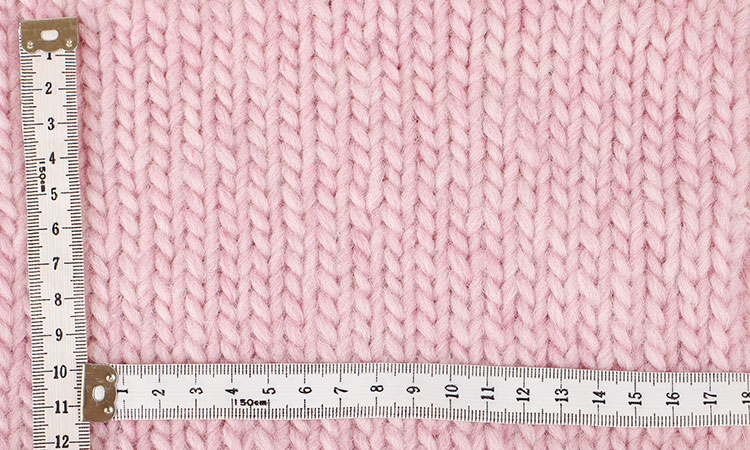Come misurare la vostra tensione e come fare i calcoli per un modello

Questa spiegazione vale sia per i modelli a maglia sia per quelli a uncinetto.
Ecco come fare i calcoli per un modello a partire dalla tensione:
Controllate sempre lo schema delle misure per trovare la taglia di cui avete bisogno.
Leggete qui come leggere gli schemi delle taglie.
Calcolo:
Il modello è progettato in modo che misure riportate nello schema siano quelle del capo finito.
Per questo calcolo, abbiamo bisogno di conoscere la tensione e quindi si procede come segue:
Se 10 cm in larghezza = 20 maglie in larghezza,
allora 1 cm in larghezza corrisponde a (20/10) = 2 maglie.
Se la larghezza del corpo è 48 cm, allora abbiamo bisogno di
48 cm x 2 maglie = 96 maglie.
Conseguenze:
Se ottenete 22 maglie in 10 cm invece di 20, il vostro capo risulterà 5 cm più corto rispetto alle misure indicate nel diagramma.
Tutti i calcoli del modello sono basati sulla tensione (campione) e questo influisce su tutto: ad esempio, la forma del collo – gli aumenti sulle maniche – il bordo di avvio - raglan etc.
Per cui avrete bisogno di cambiare la misura dei ferri :)
Campione:
Campione:
Per prendere le misure sul vostro capo = le misure nel modello, dovete sempre iniziare lavorando un campione – per arrivare a raggiungere la tensione corretta.
Avviate più maglie rispetto a quelle che vi indica il campione per 10 cm in larghezza e lavorate un po' più di 10 cm in altezza, iniziando con la misura di ferri suggerita.
Se la tensione è:
20 maglie in larghezza e 27 ferri in altezza a maglia rasata = 10 x 10 cm.
Appoggiate un metro da sarta sul lavoro e contate le maglie:
20 maglie = 10 cm in larghezza e 27 ferri in altezza = 10 cm.
Risultati / conseguenze:
Più di 20 maglie - passare a una misura più grande di ferri
Meno di 20 maglie – passare a una misura di ferri più piccola.
Quando avrete trovato la misura corretta di ferri, sarete pronte per iniziare.
Ricordatevi di controllare la vostra tensione durante il lavoro; potrebbe cambiare mano a mano che si procede con il lavoro.
Misura di ferri corretta o sbagliata:
Misura di ferri:
Non c'è una misura di ferri corretta; il modo di lavorare di ognuno è diverso.
La misura di ferri indicata è solo un suggerimento.
Trovate la misura di ferri che vi permette di ottenere la tensione corretta – se avrete bisogno di usare i ferri di misura 6 mm, quando il modello indica la misura di 4 mm, allora fatelo.
Il nostro team di design usa ferri di misure diverse pur lavorando con lo stesso filato. Questo fatto è molto comune.
Tipi di ferri:
E' molto individuale.
Ci sono ferri realizzati in legno, bamboo, metallo, plastica, così come altri materiali.
Ognuno deve trovare il proprio preferito, ed è normale avere tensioni diverse quando si usano tipi diversi di ferri (circolari, ferri a doppia punta, etc.).
Per cui quando provate la tensione con - ad esempio - ferri di metallo, provate anche un altro materiale, come la betulla e vedete se funziona meglio per voi.













Maschenprobe bei Zopfmuster oder Patentmuster:auseinander ziehen oder Massband nur drauflegen?
17.04.2025 - 21:04